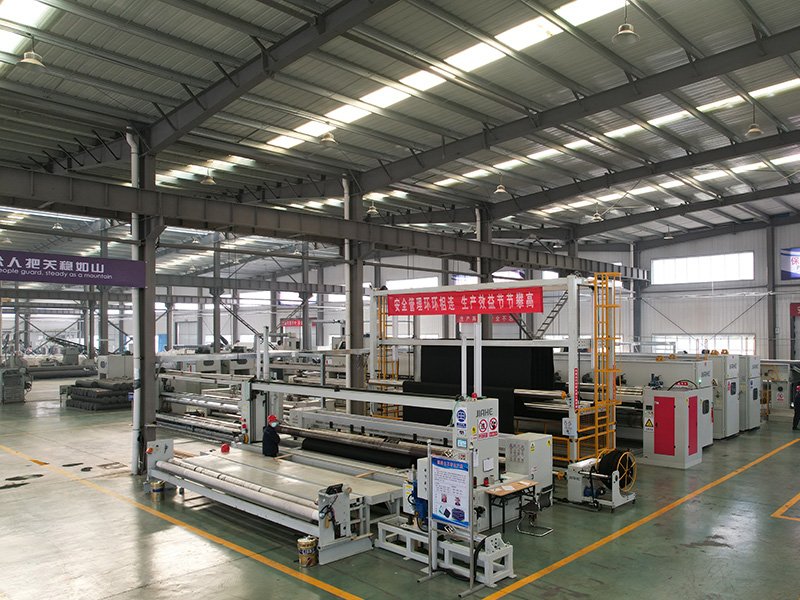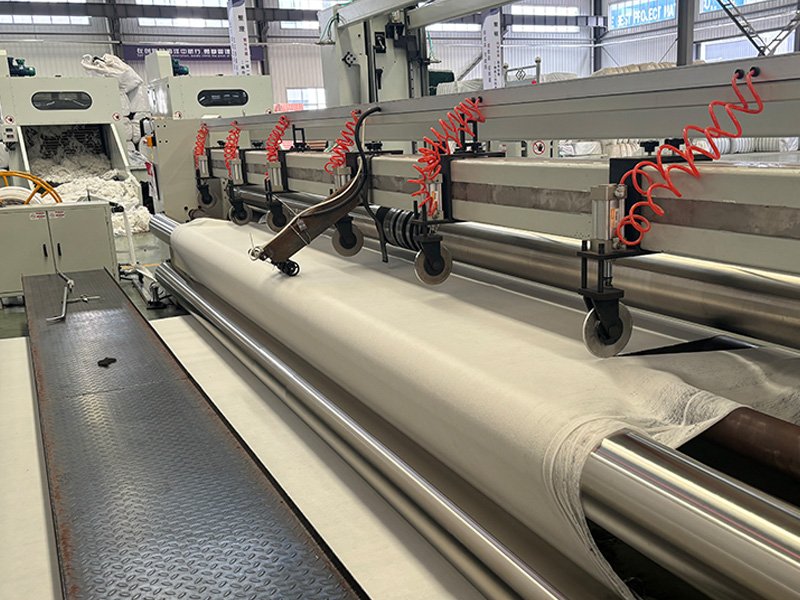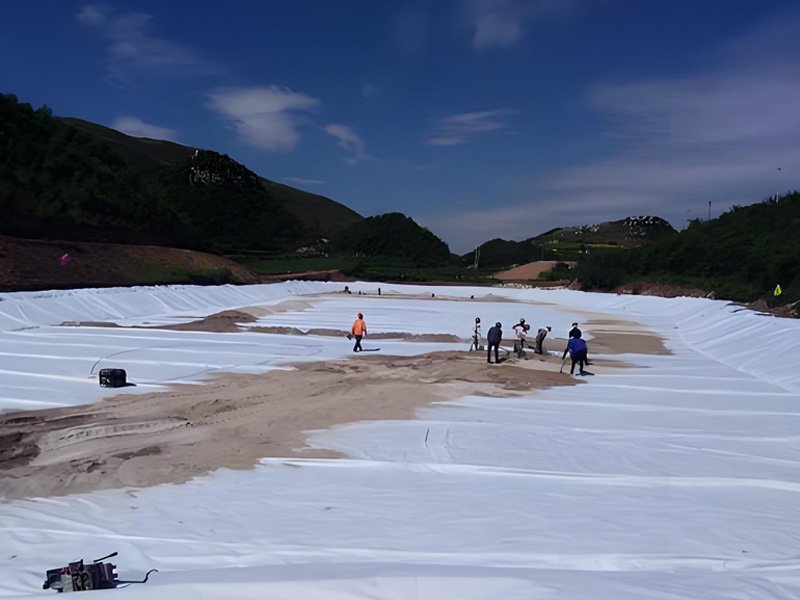Share:
Short fiber non woven geotextile is the kind of cost effective geotextile fabrics produced by mechanically bonding synthetic fibers—typically polypropylene (PP) or polyester (PET)—through a needle-punching process. Its unique combination of filtration, separation, reinforcement, and drainage properties makes it an indispensable material for projects ranging from road construction and landfill development to erosion control and foundation stabilization.
As dedicated geotextile manufacturers and a trusted geotextile factory, BPM geosynthetics is committed to providing high-quality short fiber non woven geotextile that meets strict quality standards, providing reliable performance in diverse environmental conditions.
A Short Fiber Non Woven Geotextile is a permeable geosynthetic fabric engineered from staple fibers (short fibers) that are mechanically interlocked through a process called needle punching or thermally bonded. Unlike woven geotextiles, which have a distinct interlacing pattern, Short Fiber Non Woven Geotextiles exhibit a random fiber orientation, creating a multidirectional strength and excellent filtration characteristics. These geotextiles are typically manufactured from synthetic polymers such as polypropylene or polyester, chosen for their durability, chemical resistance, and inertness in soil environments. The resulting fabric is a robust, flexible, and cost-effective solution for a wide array of civil engineering and construction applications. As leading Geotextile Manufacturers and a reputable Geotextile Factory, we understand the critical role that high-quality Short Fiber Non Woven Geotextile plays in ensuring the longevity and performance of infrastructure projects.
The production of Short Fiber Non Woven Geotextile involves several key steps:


| Item | Unit | BPM10 | BPM15 | BPM20 | BPM25 | BPM30 | BPM35 | BPM40 | BPM45 | BPM50 | BPM60 | BPM80 |
|---|---|---|---|---|---|---|---|---|---|---|---|---|
| Mechanical Properties (MD=Machine Direction Strength/CD=Cross Machine Direction Strength) | ||||||||||||
| Weight | g/m2 | 100 | 150 | 200 | 250 | 300 | 350 | 400 | 450 | 500 | 600 | 800 |
| Weight Variation | % | -8 | -8 | -8 | -8 | -7 | -7 | -7 | -7 | -6 | -6 | -6 |
| Thickness | mm | 0.9 | 1.3 | 1.7 | 2.1 | 2.4 | 2.7 | 3 | 3.3 | 3.6 | 4.1 | 5 |
| Width Variation | % | -0.5 | ||||||||||
| Break Strength (MD & XMD) | kN/m | 2.5 | 4.5 | 6.5 | 8 | 9.5 | 11 | 12.5 | 14 | 16 | 19 | 25 |
| Break Elongation | % | 25-200 | ||||||||||
| CBR Burst Strength≥ | kN | 0.3 | 0.6 | 0.9 | 1.2 | 1.5 | 1.8 | 2.1 | 2.4 | 2.7 | 3.2 | 4 |
| Hydraulic Properties | ||||||||||||
| Sieve Size O90 | mm | 0.07-0.02 | ||||||||||
| Permeability Coefficient | cm/s | (1.0-9.9)× (10-1 ~ 10-3) | ||||||||||
Short Fiber Non Woven Geotextiles possess a unique combination of features that make them highly versatile and effective in various applications:


The use of Short Fiber Non Woven Geotextile offers numerous advantages in civil engineering and construction projects:
The lifespan of a Short Fiber Non Woven Geotextile fabric can be significant, often ranging from 25 to 50 years or even longer when properly specified and installed. However, the actual service life is influenced by several factors:
To ensure the maximum lifespan of a Short Fiber Non Woven Geotextile, it is crucial to:
As experienced Geotextile Manufacturers, we emphasize the importance of selecting the right Short Fiber Non Woven Geotextile and implementing proper installation techniques to achieve the desired long-term performance.
While Short Fiber Non Woven Geotextile is not primarily designed as a weed barrier, it can offer a degree of weed suppression, particularly when used as part of a layered system. The effectiveness of Short Fiber Geotextile in stopping weeds depends on several factors:
It’s important to note that dedicated weed barrier fabrics are specifically designed with a tighter weave or non-woven structure and often incorporate chemical treatments to inhibit weed growth. While Short Fiber Non Woven Geotextile offers benefits in soil stabilization, filtration, and separation, it may not provide the same level of long-term weed control as specialized weed barrier fabrics.
For applications where weed suppression is a primary concern, a dedicated weed barrier fabric might be a more suitable choice. However, in applications where soil stabilization, drainage, or filtration are the main objectives, the weed-suppressing properties of Short Fiber Non Woven Geotextile can be an added benefit, especially when used in conjunction with a surface cover. As a leading Geotextile Factory, we offer a range of geotextile solutions tailored to different project needs.


BPM Geosynthetics, as one of the largest geo liner manufacturers and companies in China, is renowned for strong geomembrane liners and geotextile liners manufacturing alibilities. We offer complete range of best quality geomembranes, geotextiles and related geosynthetic liners at competitive factory price for your environmental, civil engineering and mining applications.
We are at your service in 24 hours/7 days. Any questions or inquiries, please contact us.
[fluentform id="1"]
When you’re looking for geomemrbanes, geotextiles or other geosynthetic liner products or services, please fill in the form, we are always here repond to your inquiries as soon as possible.